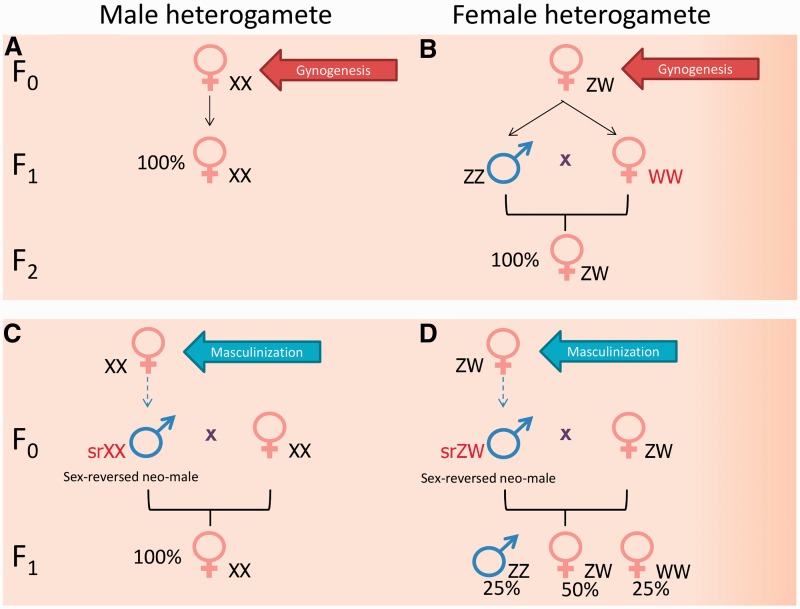Figure 1:
Inferring the type of sex chromosomal system by progeny sex ratio as a result of genome manipulation or artificial sex reversal. (A) Performing gynogenesis on male heterogametic species will produce an all-female (XX) F1 offspring. (B) For the female heterogametic species (assuming full viability of all genotypes), gynogenesis will produce F1 progeny with about 1:1 sex ratio and all F1 females will have WW sex chromosomes. [In case of WW lethality, an all-male (ZZ) F1 offspring will be produced, whereas partial survival of WWs will yield intermediate results]. When F1 females (WW) are crossed with normal males (ZZ), their F2 offspring will be all female (ZW). (C) When hormone- or temperature-based masculinization is performed in a male heterogametic species, crossing of sex-reversed neo-males (srXX) with normal females will produce all-female F1 offspring. (D) For female heterogametic species (assuming full viability of all genotypes), the expected phenotypic sex ratio in the F1 progeny, from crossing the sex-reversed neo-male (srZW) with normal female (ZW), will be 25% males and 75% females. Among the F1 females, one-third of them will have WW sex chromosomal pair that does not normally occur in nature and yield an all-female offspring when crossed with a normal male (ZZ). (If WWs showed lethality, then 33% ZZ males and 67% ZW females will be expected, whereas their partial survival will yield intermediate results).

